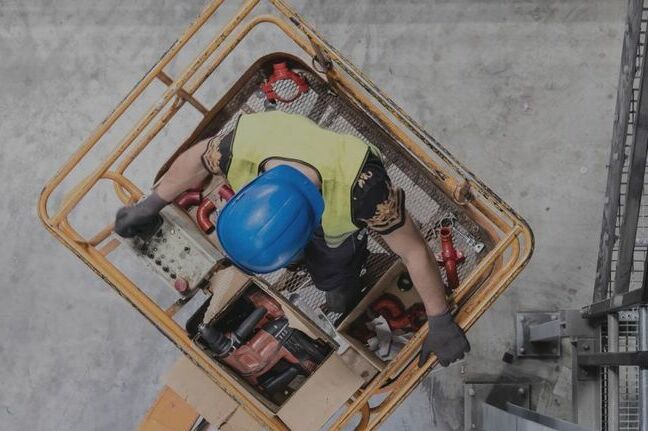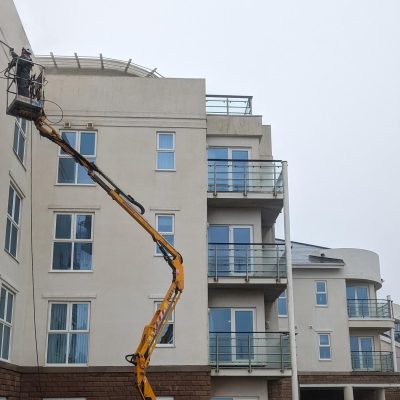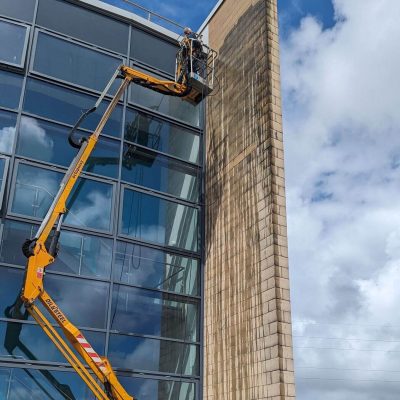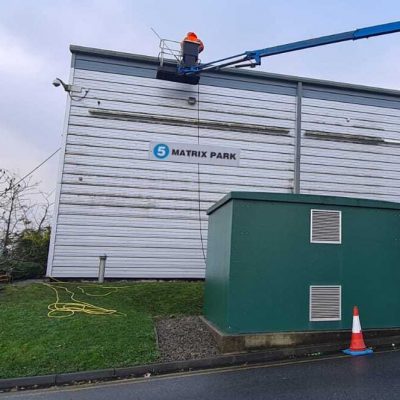What is a Fall Restraint System?
A fall restraint system is designed to prevent workers from falling in the first place. The system connects the worker to an anchor point, limiting their range of movement so they cannot physically get to an edge or opening where a fall hazard exists. Common components in a fall restraint system include:
- Full body harness – This specially designed harness securely fits around a worker’s torso and has a tether attachment point on the back between the shoulder blades.
- Anchorage – This is a secure point to attach the full body harness. Examples include closed steel rings on a roof, concrete columns, steel structural beams, or mobile anchor stands.
- Restraint line – Also called a lanyard or deceleration device, this flexible rope or strap connects the full body harness to the anchorage with a tether. The length determines how far a worker can move away from the anchorage.
- Energy absorber – Some systems have a component that elongates slightly to reduce jarring forces if a worker trips or falls against the restraint.
- Interlocking snap hooks – These special carabiners connect the harness to the lanyard or energy absorber to reduce potential roll out.
The key advantage of a fall restraint system is that it completely prevents falls when properly designed, installed, and used. Limiting a worker’s range of motion means they cannot get into a situation where they can fall over an edge. This passive system also does not require any special training or actions by the worker after initial instruction. Simple supervision and enforcement of use is all that’s needed.
Fall restraint may be a preferred option when working near:
- a roof edge,
- platform perimeters,
- bridge surfaces, or
- any raised work area without guardrails.
It’s also useful for working from ladder cages, scissor lifts, and cherry pickers.
As long as anchorage points have adequate strength and the tether length limits movement, a properly designed fall restraint system can allow flexibility to perform many tasks safely at heights.

What is a Fall Arrest System?
A fall arrest system consists of components that work together to catch a worker in the event of a fall and reduce impact forces for a safe landing.
Everything from fall restraint system plus:
- Lifeline – This flexible rope or retractable cable connects to the harness through an energy absorber. It has specific length and strength requirements.
- Self-locking karabiners – Special connectors that lock automatically under tension between the harness, lifeline, and anchorage.
The big difference with fall arrest is that it allows normal movement and does not restrain worker reach. The system remains passive until a fall occurs, and then it activates to safely capture and hold the worker, typically using the lifeline and harness.
This means the system must be durable enough to catch falling workers of maximum anticipated weight without failing. Proper clearance underneath is also imperative to prevent striking lower surfaces before the system fully arrests.
Fall arrest systems provide the flexibility to perform many duties at height near unprotected edges and openings. They are frequently required when restraint is not feasible, like many construction activities. However, fall arrest does rely on worker compliance and proper use at all times. It also mandates full rescue plans and training on post-fall procedures like harness suspension relief.
Key Differences Between Fall Restraint and Fall Arrest
Now that we’ve reviewed the basics of how fall restraint and fall arrest work, let’s summarize some key differences:
| Feature | Fall Restraint | Fall Arrest |
| Purpose | Prevent falls | Catch falls |
| Positioning | Anchor must prevent worker access to falls | Anchor can have overhead anchorage |
| Training | Instruction only | Full training required for proper use and post-fall procedures |
| Rescue | Simple retrieval if fails | Intricate rescue plans needed for fall recovery |
| Worker responsibility | System design | Worker compliance and activation |
| Forces | Limits pull forces | Must control greater deceleration G-forces |
| Clearance | No safety clearance zone required | Substantial clearance imperative |
| Flexibility | Less freedom of motion | More freedom of motion |
| Compliance | Enforces continuous attachments | Allows detachment between anchor transfers |
As you can see, the choice between fall restraint or fall arrest involves a variety of factors from worker activities to system design. In many cases, restraint may be preferred as the primary means of prevention. But arrest systems prove valuable when restraint is not practical or reliable.
Evaluate the Options
So which type of fall protection system is right for your elevated work site? Here are some key considerations when evaluating fall protection choices:
- What are the precise fall hazards and exposed edges in the work space?
- How close to open edges will workers be performing tasks?
- Can restraint anchor points be positioned to prevent accessing fall regions?
- What movement capabilities are required to accomplish all duties?
- How competent and compliant will workers be in following safety procedures?
- Are overhead anchorage options available if restraint anchors are infeasible?
- What is the clearance below the work surface if arrest is needed?
- How feasible will rescue from a post-fall arrested position be?
- Do the benefits of freedom of motion outweigh the risks of relying on fall arrest?
- Can a combination of restraint and arrest be used to maximize both?
Addressing these types of questions will help determine if your best option may be restraint or arrest.
Parting Words
When properly designed and implemented, either system significantly reduces the risks of working at heights. With smart planning, you can integrate the optimal forms of fall protection for your elevated worksites.



